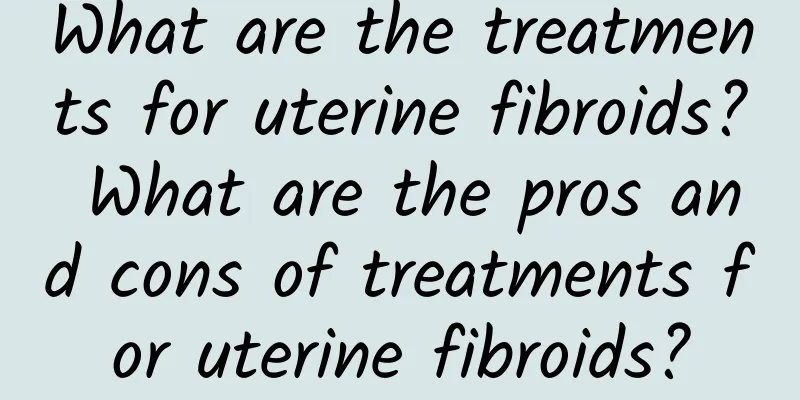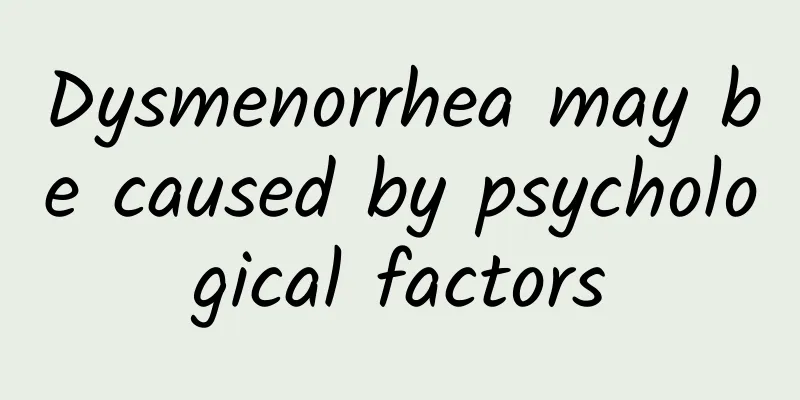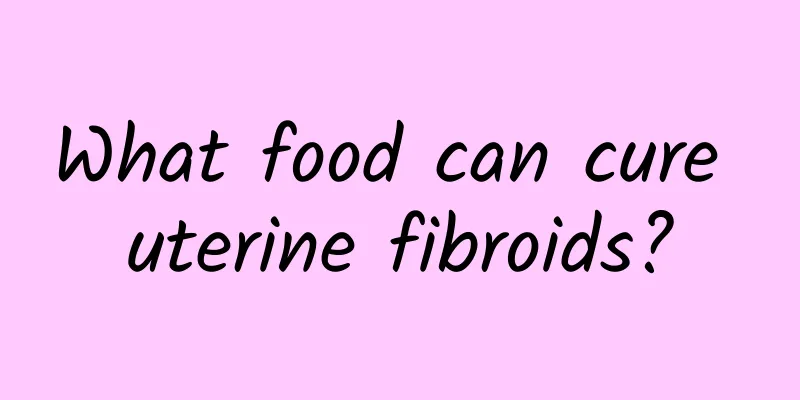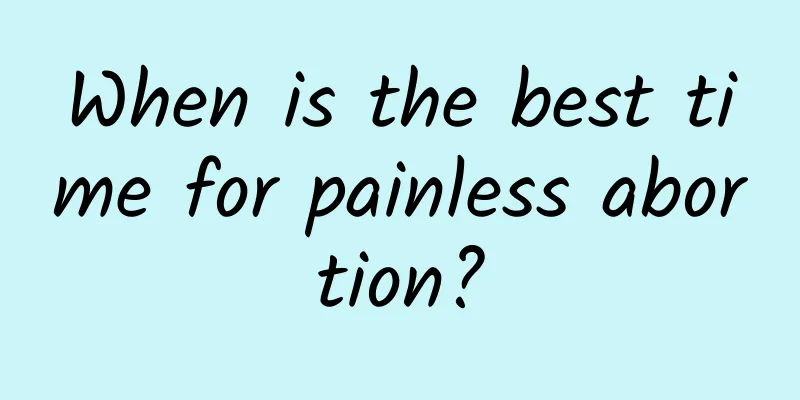What are the treatments for uterine fibroids? What are the pros and cons of treatments for uterine fibroids?

|
Women with uterine fibroids may experience increased menstruation and irregular vaginal bleeding, mainly under the mucosa and intramural fibroids. When the fibroids increase, you can feel a lump in the abdomen, there are symptoms of abdominal compression, and increased vaginal discharge, sometimes painful because of the compression and torsion of the fibroids. There are many ways to treat uterine fibroids, depending on the patient's age, symptoms, size and nature of the fibroids: 1. Follow-up observation: If the fibroid is smaller than 8 weeks of pregnancy and has no obvious symptoms, or if the uterus of a near-menopausal woman is smaller than 12 weeks of pregnancy, with normal menstruation and no compression symptoms, temporary observation is recommended. Follow-up examinations should be conducted every 3 months. Generally, due to the decrease in estrogen levels after menopause, the fibroid can gradually shrink. If the fibroid is found to be enlarged or the symptoms are obvious during the follow-up, the potential for malignant transformation of the fibroid should be considered. Surgery should be performed in a timely manner. 2. Drug treatment: For pregnant women with heavy menstrual flow and uterine enlargement of about 8 weeks, androgen therapy can be performed after the diagnosis of endometrial cancer. Androgens counteract estrogen, promote endometrial atrophy, contract the myometrium and vascular smooth muscle, and reduce bleeding. Methyltestosterone and testosterone propionate are commonly used, but the dosage and method should be under the guidance of a doctor to avoid improper use of drugs, which may lead to endocrine disorders, virilization, etc. 3. Interventional therapy for uterine fibroids: Interventional therapy for uterine fibroids involves inserting a very thin catheter into the blood supply artery of the uterine fibroids, i.e., the nutrient blood vessel, to block the blood supply to the fibroids, causing them to lose nutrition, necrotize, shrink, or even disappear. This method is suitable for all kinds of fibroids, has no obvious contraindications and complications, and preserves the patient's reproductive function. Clinically proven, 97% of pelvic compression symptoms and falling sensations disappear. 4. Surgical treatment: If long-term conservative treatment is ineffective or the symptoms are obvious, the fibroids are large, anemic, or growing rapidly, surgical treatment should be considered. Myomectomy: Suitable for young patients who want to have children. Whether it is subserosal, intramural, or even submucosal, fibroids can be removed through the abdomen to preserve the uterus. Hysterectomy: For older patients with uterine fibroids who have obvious symptoms and no desire to continue to have children, total hysterectomy, subtotal hysterectomy, and vaginal hysterectomy should be performed. One side of the normal ovary can be retained at around 50 years old to maintain its endocrine function. Minimally invasive surgery for uterine fibroids: No surgery, no hysterectomy, can treat uterine fibroids. This treatment method breaks through the limitations of many traditional treatment methods and is favored by most uterine patients. |
Recommend
Treatment of chronic pelvic inflammatory disease
Pelvic inflammatory disease is a common gynecolog...
shock! "Too thick arms" may be caused by the intestines
Slender and long arms are the ideal goal of almos...
Irregular menstruation is a common gynecological disease
What are the symptoms of irregular menstruation? ...
Are Vivian Hsu’s 5 weight loss concepts correct? Nutritionist Zhao Hanying: How to adjust to healthy weight loss
Well-known artist Vivian Hsu once announced on Fa...
What preparations should be made before abortion surgery?
What preparations should be made before an aborti...
Five tips to keep you away from pelvic inflammatory disease
Five tips to keep you away from pelvic inflammato...
What is the reason for thin people to get uterine fibroids? Will uterine fibroids shrink if people lose weight?
What is the reason for thin people to get uterine...
Can’t control your appetite and your weight loss efforts are failing? Female Chinese medicine practitioner: It’s mostly caused by “excessive temper”!
"I just finished my meal, why am I hungry ag...
Does artificial fructose make you fat? Expert: The same is true for sucrose
The prevalence of obesity in China continues to r...
Coca-Cola's new ad calls for weight loss, draws criticism
New York City, the United States, has launched a ...
Premenopausal symptoms should not be underestimated
Amenorrhea is often very painful for women and is...
Understand the 4 harms of vulvar leukoplakia to patients
Vulvar leukoplakia is the degeneration of vulvar ...
What tests should be done for vaginitis?
Vaginitis is a common gynecological disease in cl...
Will female cervical erosion turn into cervical cancer? Women should beware of three major misunderstandings about cervical cancer
Cervical cancer, a female malignancy with a secon...
What is the degeneration of uterine fibroids?
What is the degeneration of uterine fibroids? Bec...









